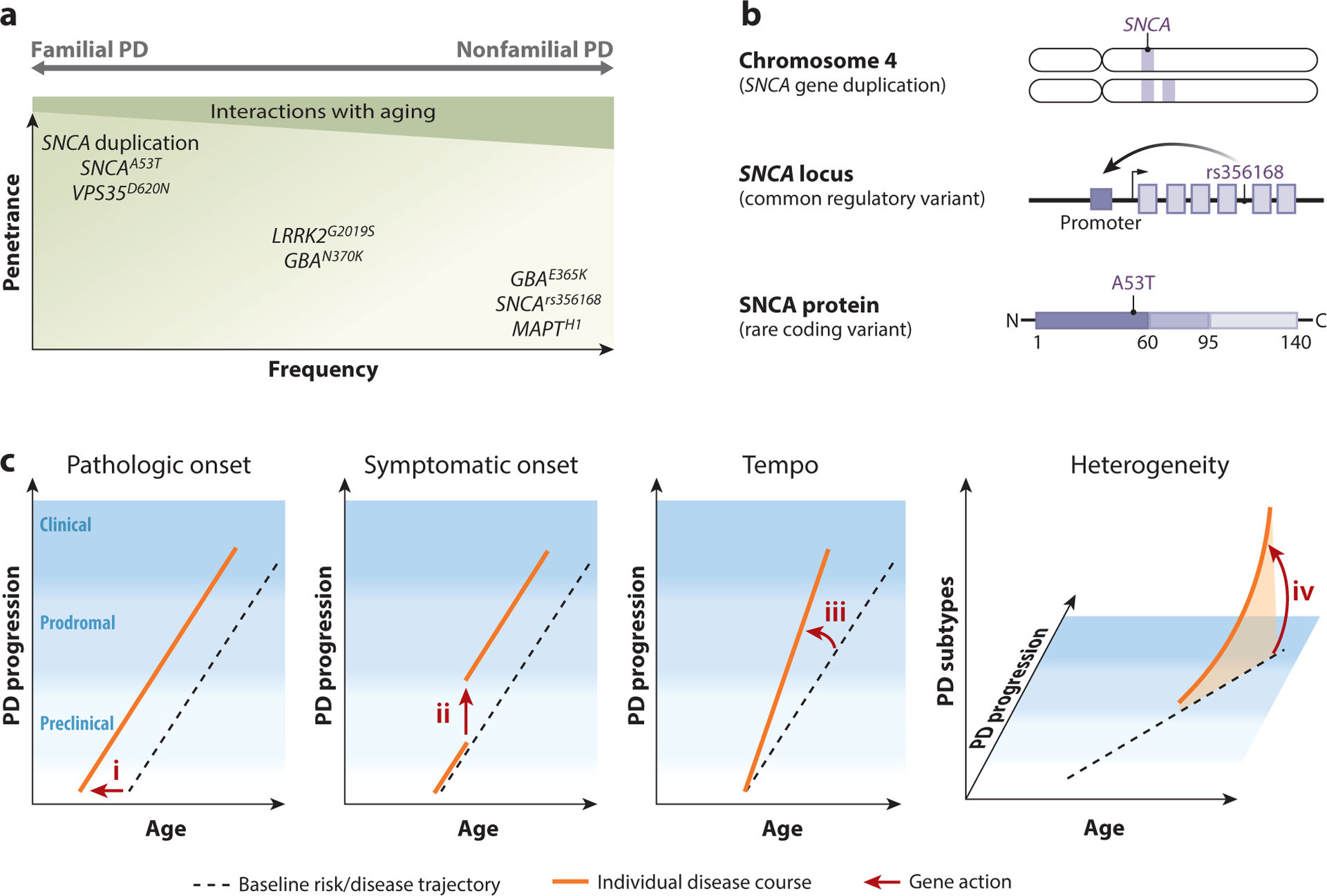Figure 2.

Genetic architecture of Parkinson’s disease (PD). (a) PD risk alleles have a wide spectrum of frequencies and effect sizes (penetrance). Many PD risk alleles also show age-dependent penetrance. The manifestation of familial versus nonfamilial PD depends on allele penetrance, age, and the presence of genetic and environmental modifiers. (b) Allelic heterogeneity of synuclein-alpha (SNCA). Copy number variants (duplication) and both common (rs356168) and rare (p.A53T) single-nucleotide variants affecting SNCA are associated with PD risk. Locus duplication and common regulatory variants that enhance gene promoter activity increase overall gene expression levels. Rare variants promote SNCA protein aggregation. (c) Conceptual model for how PD genetic variants (arrows i–iv) might affect risk and overall course of disease (orange lines). The black dotted line represents the baseline population PD risk and disease trajectory. Genetic risk factors might influence (i) the earliest formation and propagation of disease pathology or (ii) the conversion from preclinical to prodromal disease (first clinical symptoms). It is also possible that genes modify (iii) the overall tempo of PD clinicopathologic progression. Beyond PD initiation and progression, genetic factors might plausibly impact (iv) the heterogeneous manifestations of PD, such as the presence and severity of specific motor and nonmotor features.
